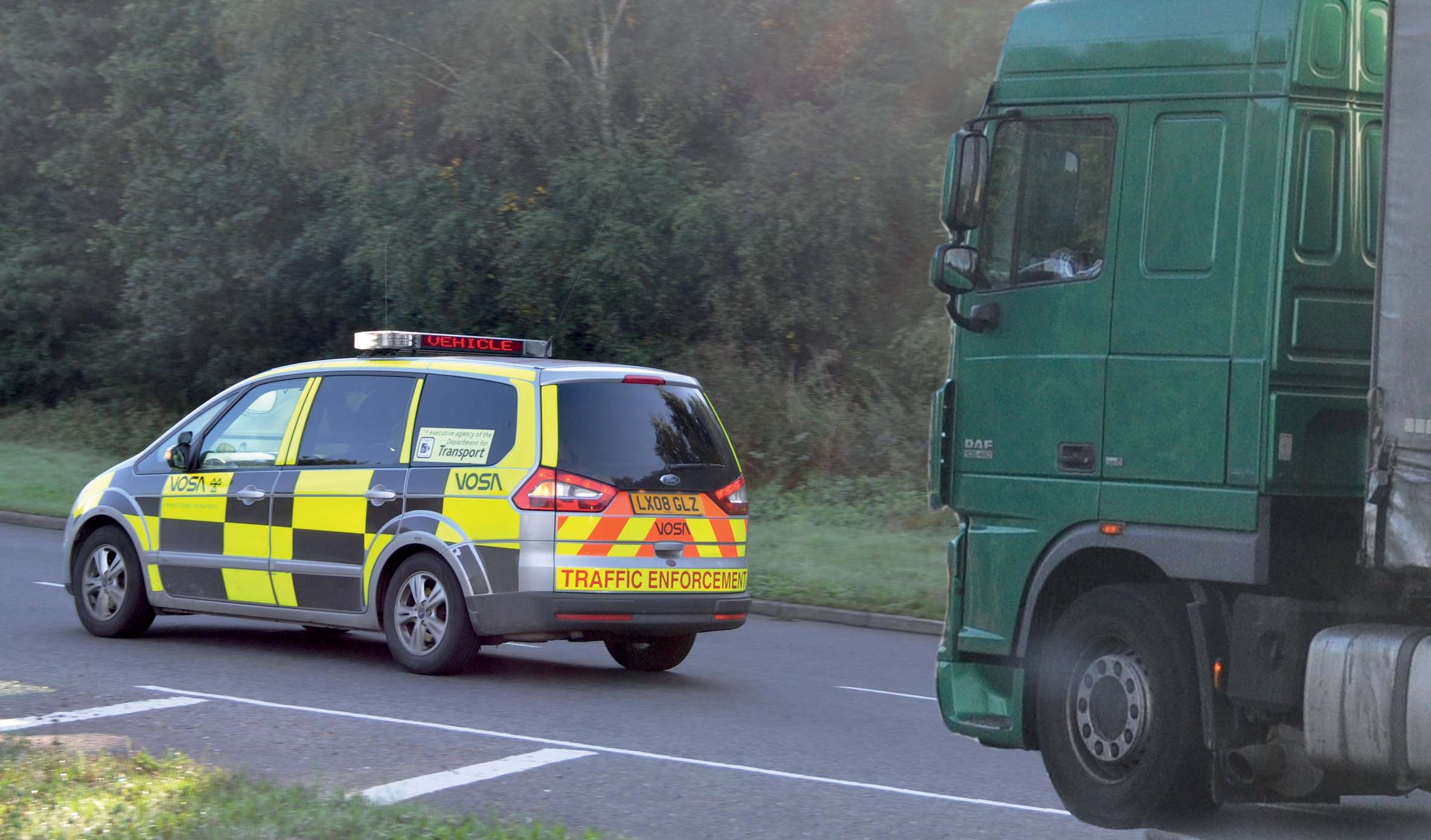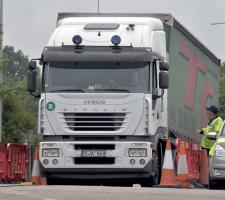
The principles of Weigh-In-Motion (WIM) are well established. Data derived from vehicles passing over in-ground sensors can be interpreted for vehicle classification (axle counts and spacing) and positive identification (especially when linked to image capture) applications as well as to derive individual axle and gross vehicle weight (GVW).
WIM can be applied in both high-speed (running lanes) and low-speed situations (weigh stations, tolling booths and so on) and the technology can achieve impressive levels of accuracy. For many, the quartz-based piezoelectric sensor is the natural choice for WIM applications. However, although they have led the way in terms of accuracy for over a decade, quartz-based sensors are relatively expensive. For most applications — bar the top-end enforcement-related ones — so-called BL-type sensors are perfectly adequate.
The latter marry a brass strip to a piezo-polymer material and operate in much the same fashion as the high-end quartz examples — the pressure applied on the in-ground sensor by a passing vehicle generates a current in the piezo-electric material. This can be interpreted to give a measure of weight and other characteristics. Accuracy can vary, with the more accurate systems displaying uniformity of measurement along the entire length of the strip, and there are technological variations such as in North America, where some solutions use strain gauges along a strip’s length, rather than piezo-electrics.
That said, whereas the technology in many areas of ITS has progressed over the years, much of that in the WIM sector has remained largely static.
This does not imply disinterest or sloth on the part of system suppliers. Rather, it is a case that for some time the sensor types and their associated algorithms have already met the levels of accuracy required in the European COST 323 and US ASTM E1318 standards which specify the allowable deviation from actual vehicle weight.
As a result development has tended to focus on ancillary areas, such as power consumption. A state-of-the-art WIM sensor system can be expected to function perfectly well on consumption levels of just 0.5W, which opens the door to the use of solar and wind power rather than mains connections.
Wider usage
Advances in the WIM sector tend to lean more towards the wider deployment of both the concept and systems. Geographically, there are discernible characteristics in terms of requirement and implementation practices and in developing markets in particular there is a need to reinforce the importance of achieving high levels of installation integrity and sufficient pre-service testing to verify accuracies.In terms of WIM, Europe is a mature market with relatively little in the way of new business. France is arguably the market leader with large numbers of deployed systems and outstations — something which is reflected in the high quality of its strategic roads. Overall demand across the continent is steady, although the financial downturn has had an effect in recent years.
Opportunities exist in EU accession states, where there is a desire, and indeed a legislative requirement, to bring often-antiquated infrastructure up to the latest international standards.
In the Middle East, WIM tenders are often highly prescriptive and favour the use of quartz-based sensors for preselection applications. The number of systems bought tend not to be huge, as might be expected with countries which are generally small but the insistence on quartz makes for a high-value market.
The effectiveness of WIM has won many converts in the Far East and there has been an enthusiastic uptake in countries such as Thailand, Cambodia, Vietnam and Laos. There have been some striking successes in the region.
Taiwan, for example, had an issue with overloading but has been able to step back from active enforcement since implementing WIM. Vehicle operators know that they simply will not get away with excess weights and so conform — a prime example of a successful enforcement strategy. China continues to have issues with overladen vehicles. Stories of four-wheeled vehicles with GVWs of 100tonnes are not uncommon but many WIM suppliers appear reluctant to become involved in the Chinese market (possibly due to China’s poor record of enforcing patent and copyright laws).
Interestingly, in recent months a fully quartz-based piezo-electric Chinese WIM product which is claimed to offer comparable performance to European-manufactured units has been launched onto the international market. It is too early to know if this claim will withstand the test of user experience.
Another major emerging market is India although market entry is bureaucratically complicated. Rather than adopt an existing standard, the country’s authorities have attempted to amalgamate COST 323 and ASTM E1318. The resulting 100-page technical specification is an appreciable barrier to business.
Constant expressions of interest are coming from Africa, where both WIM and automatic traffic counting solutions are fashionable. Kenya and Nigeria are markets for both high- and low-speed WIM, and Tanzania and Kenya are introducing weigh stations in an effort to reduce repeated incidents of chronic overloading.
The US market is mature and a lot of equipment is approaching end-of-life. It tends to be dominated by domestic suppliers, with some supplying bending plate-type technology, although the renewal process could open the way for an increase in the numbers of BL-type installations.
A notable aspect of the US market is its relative conservatism of applications. Besides weights, the principal application of WIM is volumetric traffic counting, with time-binned data giving an idea of road usage across the day. This is in contrast to other areas of the world where the full range of WIM-derived information (individual vehicles’ speeds, axle counts, wheelbases, individual axle weights and so on) is linked with vehicle identification and can be used/stored en masse.
Notable trends
With the current state of the art, highly accurate vehicle-by-vehicle data collection is possible with non-quartz sensors. A current drive is towards lower power requirements, with systems with a 0.01W power draw providing credible performance and off-mains power supply is becoming more common. In the UK, for instance, the Department for Transport uses automatic traffic counters which are both wind and solar-powered. These significantly reduce the cost and increase the flexibility of installation, allowing WIM/enforcement to become far more effective. WIM’s ‘Holy Grail’ is direct enforcement in the running lanes. Currently, WIM tends to be used for preselection, with vehicles identified as having potential issues then being escorted to a weigh station for certified weighing and a detailed inspection. The Czech Republic has introduced legislation to allow direct enforcement to happen.
However, whether direct enforcement in the running lanes is now a reality remains to be seen as the effects of acceleration, deceleration, wheel bounce and changes in wind speed and direction may affect accuracy and lead to legal challenges. At present 100% accuracy every time would appear to be a technological impossibility with high-speed WIM applications.
A major need in this mature market is for users to push the envelope for new applications without which the equipment suppliers will continue to provide products which meet only those applications that are already being satisfied. That said, it is notable that in the conservative US market there is increasing demand for portable WIM systems to help counter some vehicle operators’ attempts to bypass WIM/inspection stations on strategic routes. Portable WIM systems use weigh pads/strips but accuracy can be an issue.
On-vehicle weighing holds potential and is already happening in Australia using strain gauge technology. That same strain gauge technology is also used to protect culverts. In the UK, on-vehicle weighing is also used on local authorities’ refuse lorries to provide a measure of recycling performance and a more widespread use of the technology would seem logical.
Every four years the International Society for Weigh In Motion holds its industry conference and the next is scheduled for this November in Brazil. Traditionally, the event has been a showcase for new and exciting applications, practices or ideas, and it will be interesting to see what the latter part of the year brings.
-
About the Author - Andrew Lees is business support manager at Q-Free and has 35 years of experience in the ITS industry. He chairs the International Society of Weigh in Motion Vendors College and is a board member of the International Society for Weigh In Motion. Currently he is involved in the EU’s WIM21 project and participated in the Footprint project, which explored heavy goods vehicles’ environmental impact on infrastructure.













